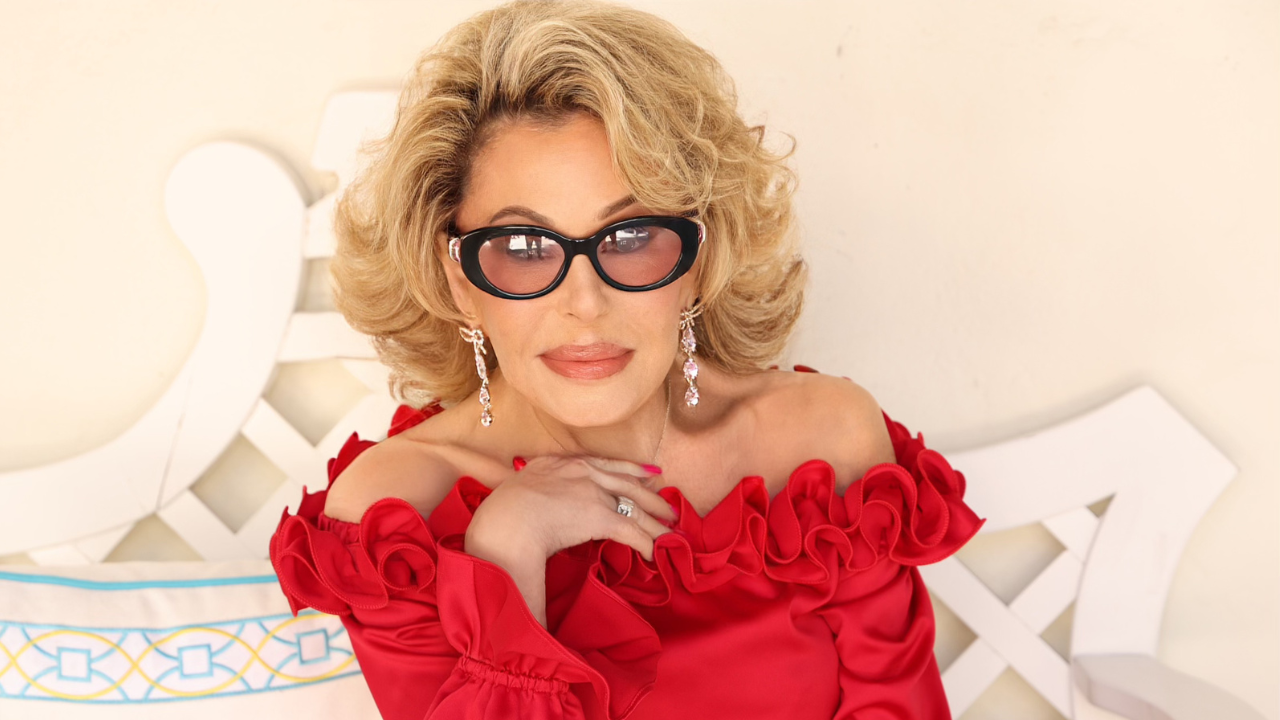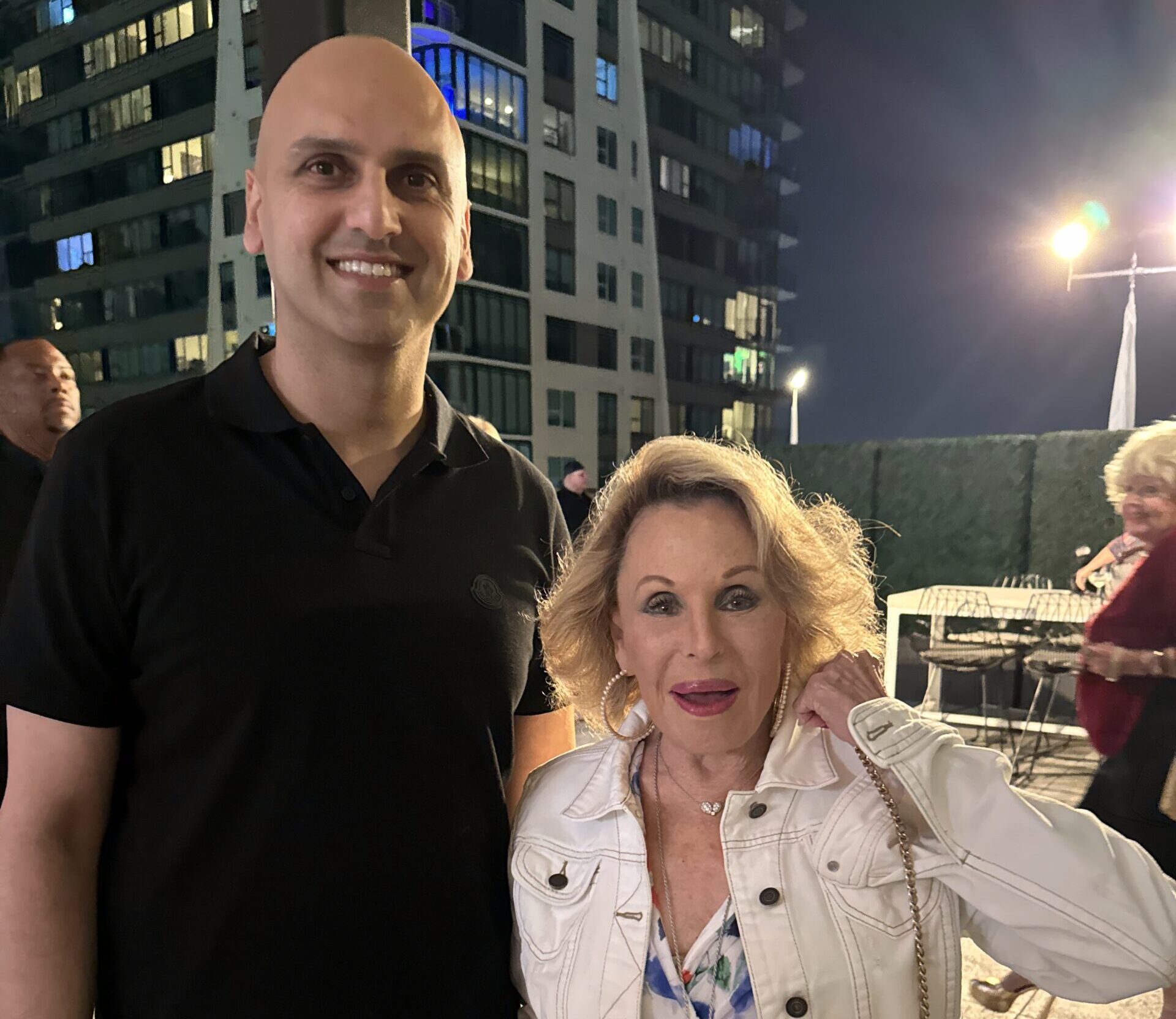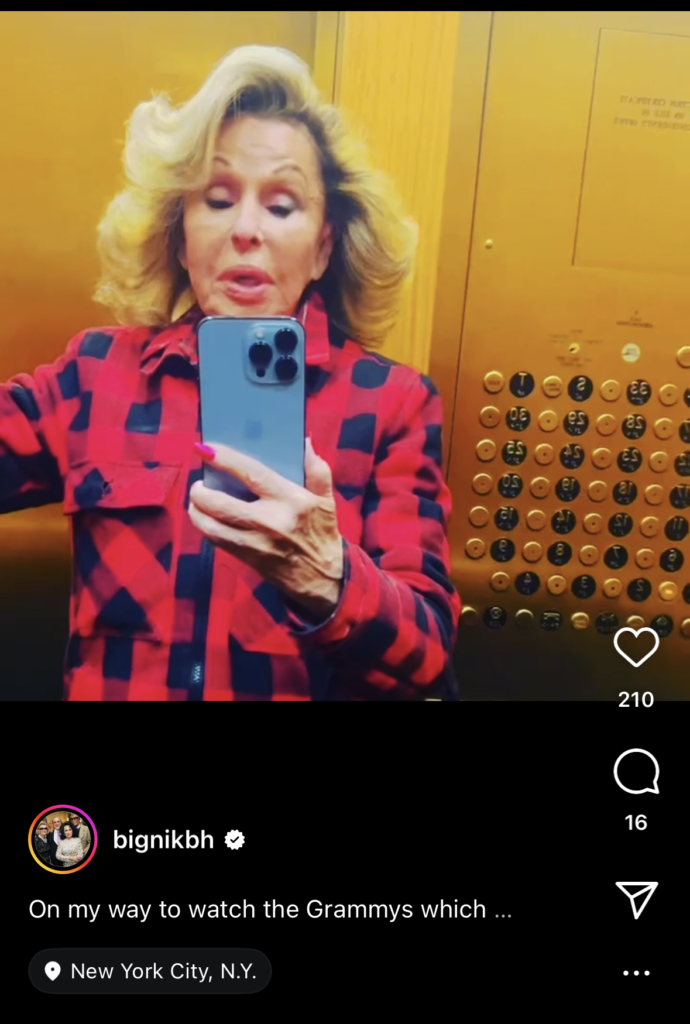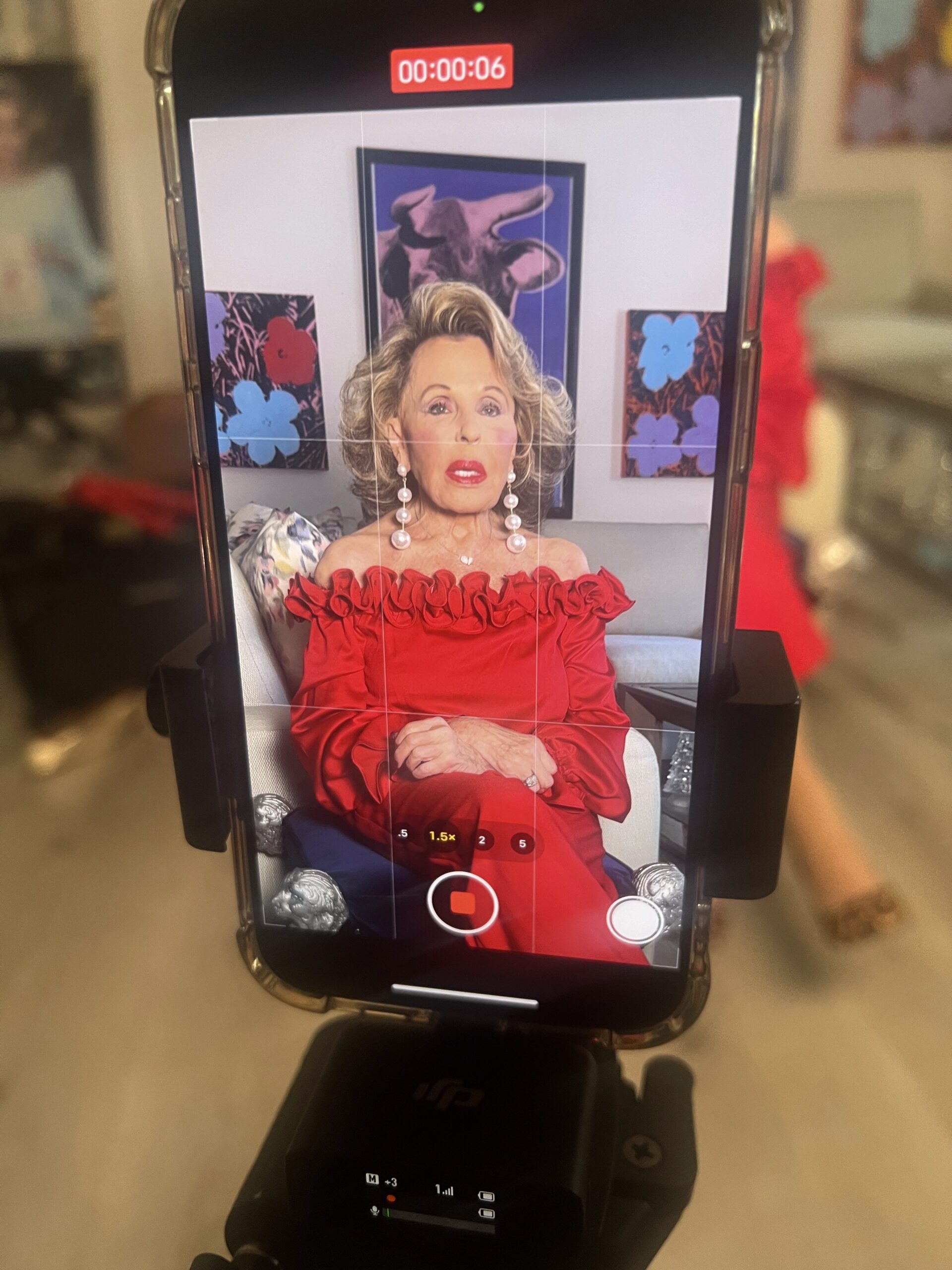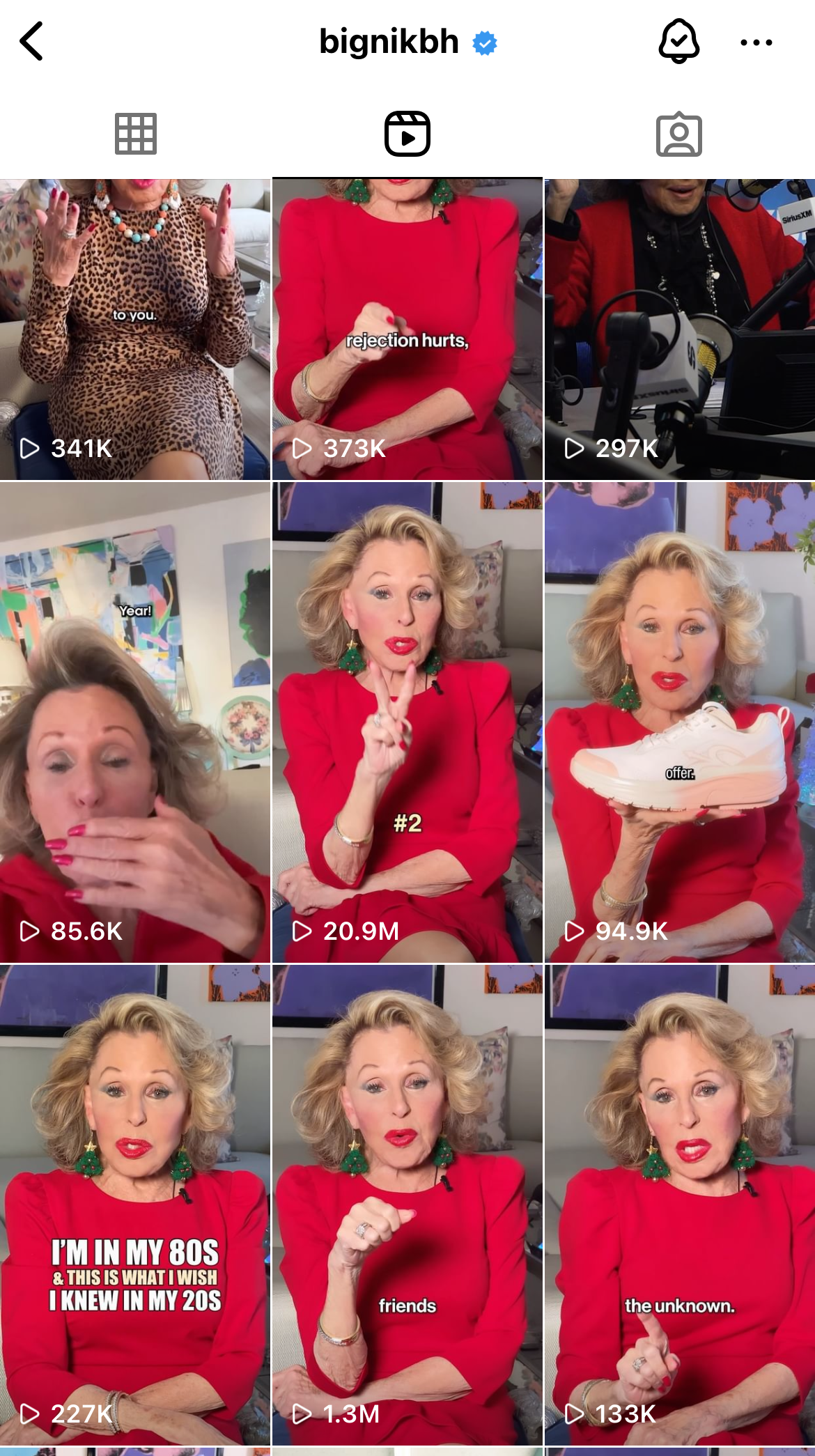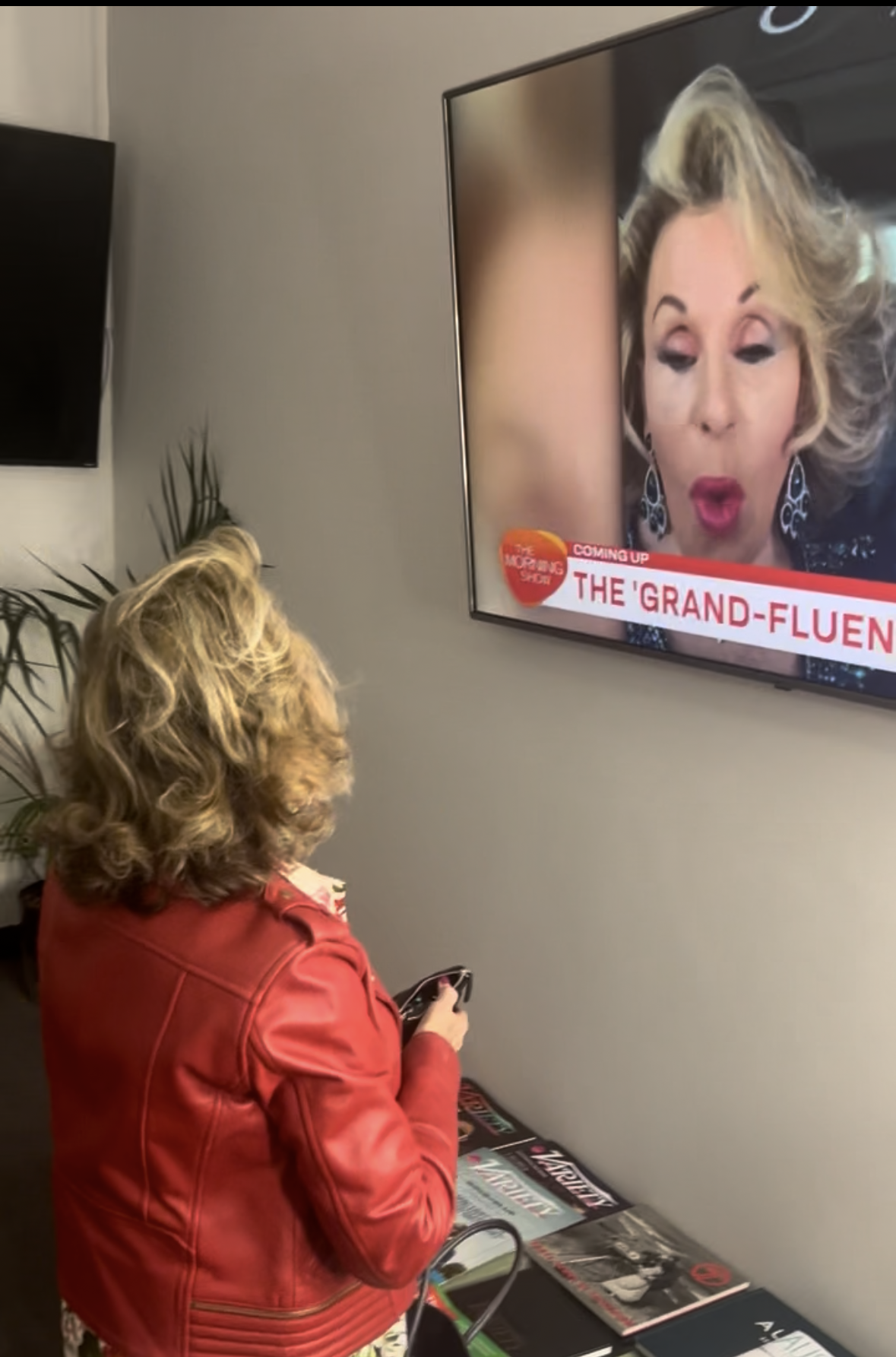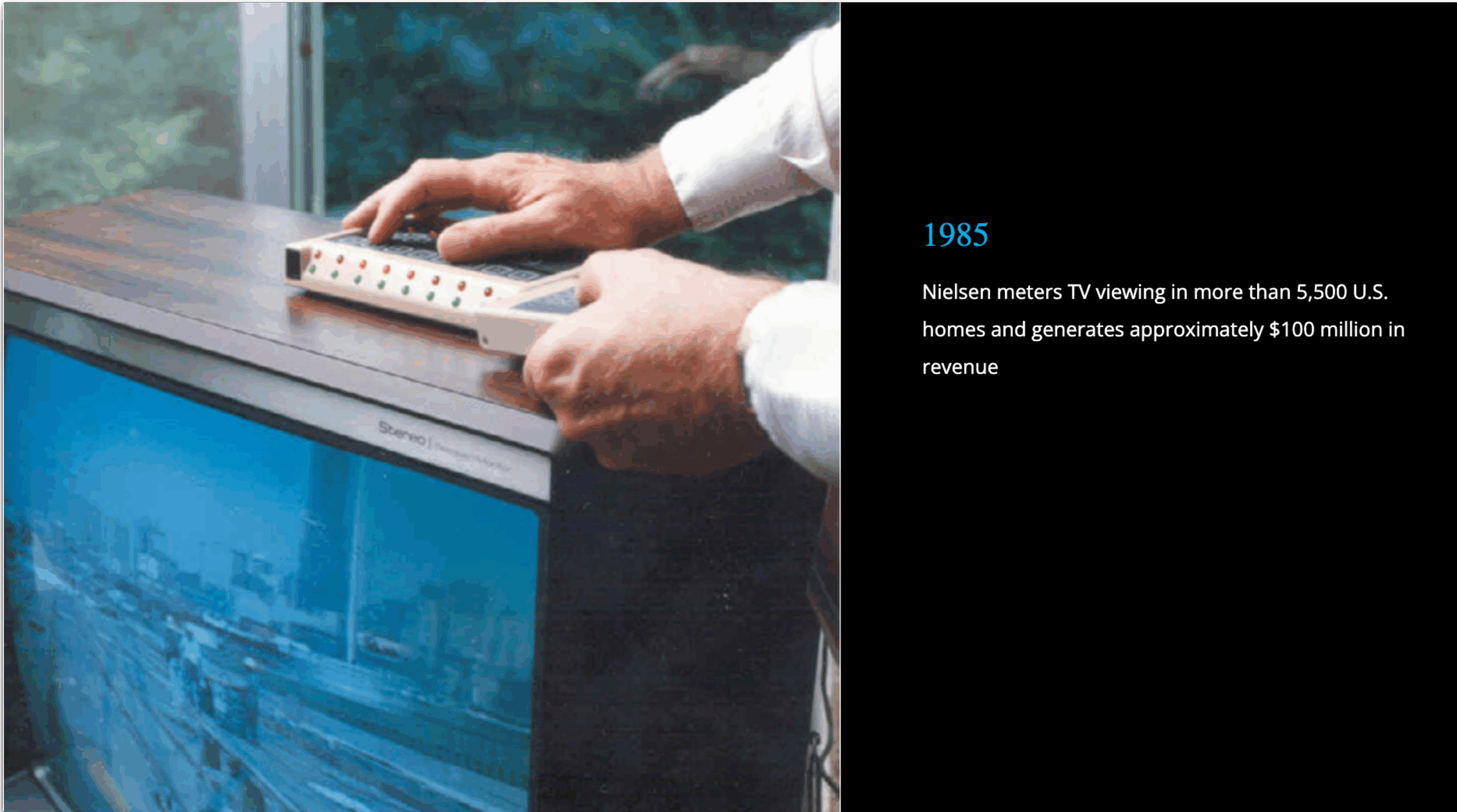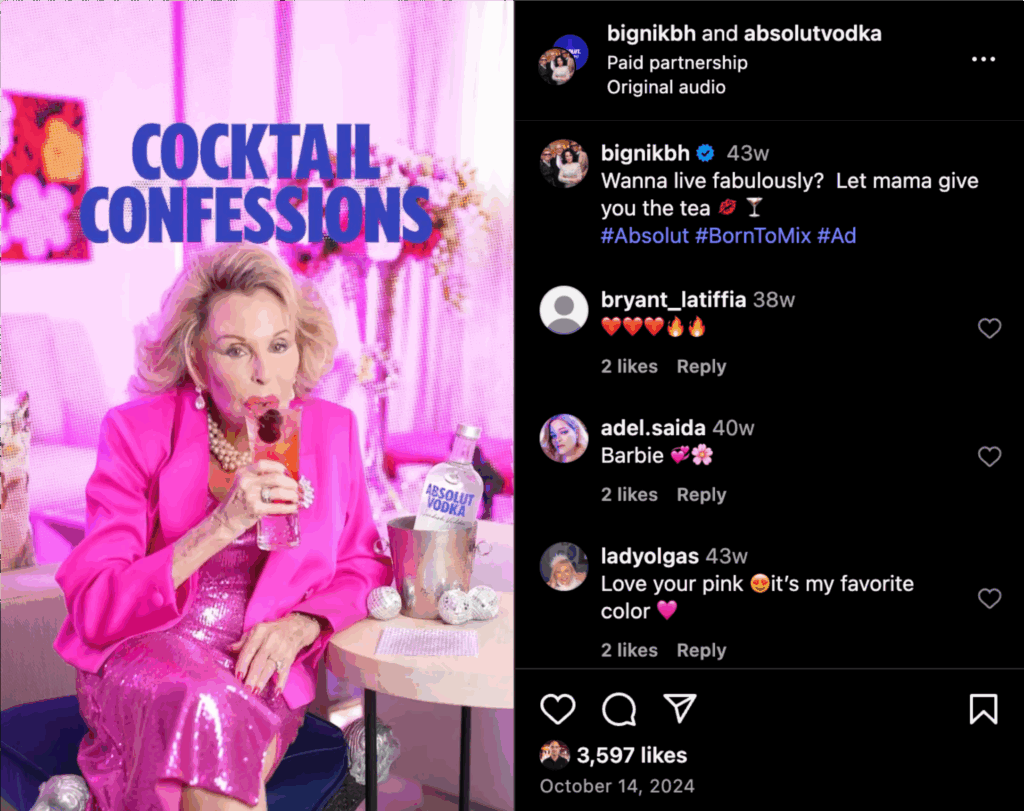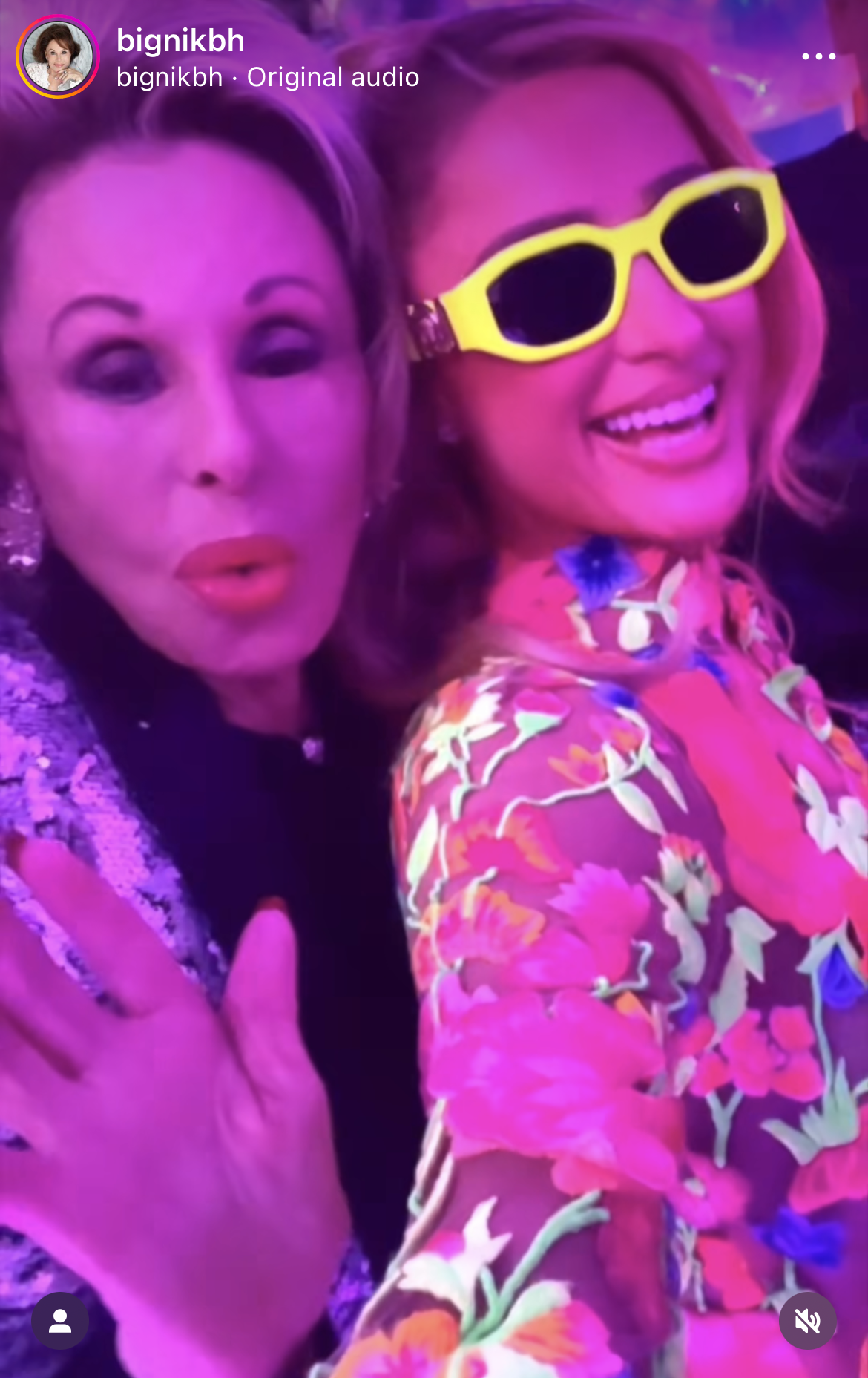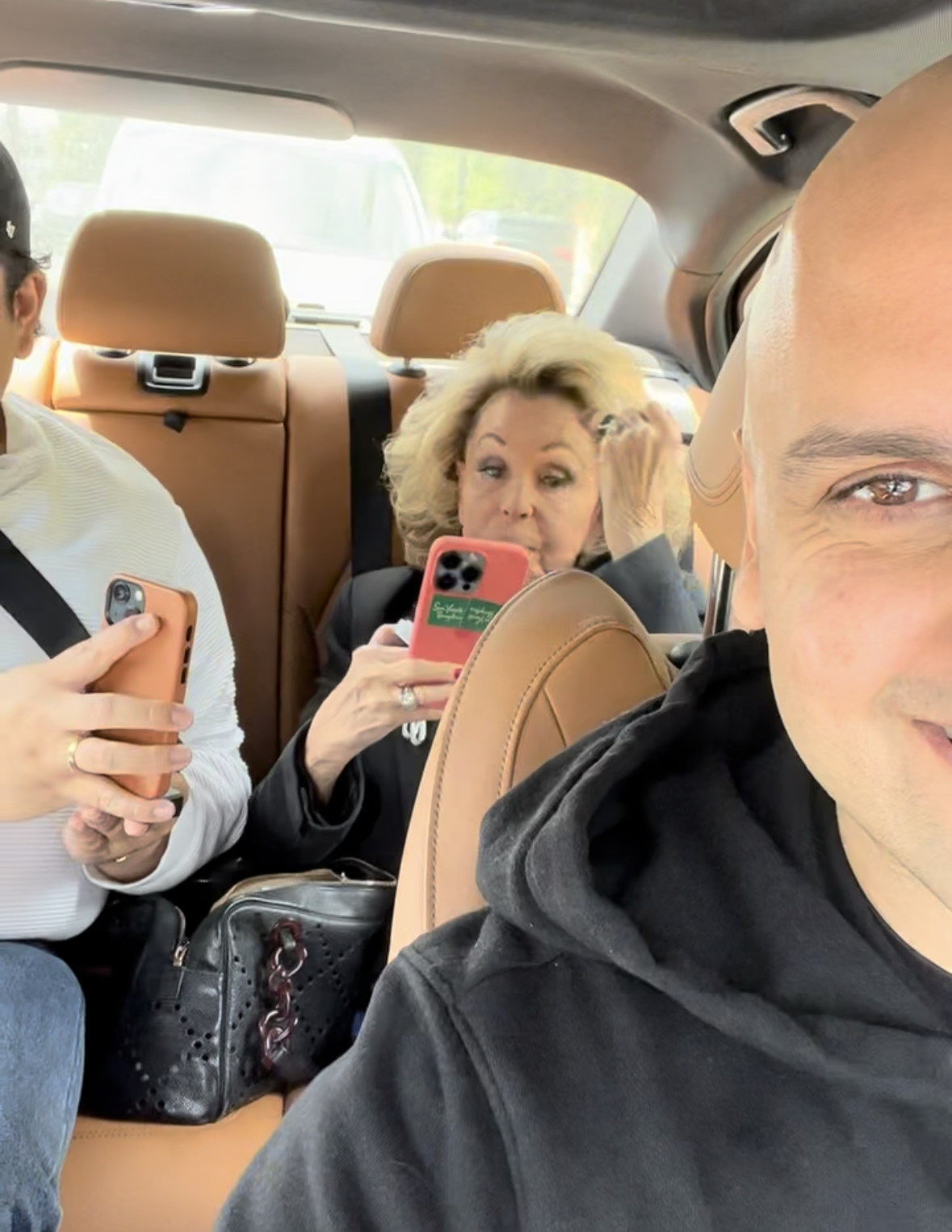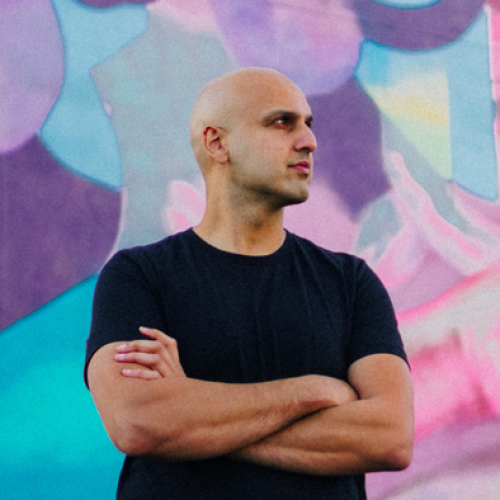Imagine you’re scrolling through TikTok when suddenly your thumb stops. On your screen is an 84-year-old woman in a rhinestone gown, sitting in an art-filled living room that screams Old Hollywood glamour. Her red lips are perfect, her posture is regal, and she’s looking directly into the camera with the confidence of someone who’s seen it all.
“I’m in my 80s,” she says, “and this is what I wish I knew in my 20s.”
You expect maybe a few thousand views. Instead, you see numbers that make you blink twice: 2.3 million views. 847K likes. 23K comments from Gen Z women users hanging on every word.
This is Nikki Haskell, and she’s become one of the most unlikely social media stars of our time. At 84, she’s accumulated over 1,000,000 followers across platforms, with some videos hitting 20 million views. She’s landed brand deals with Absolut Vodka, connected with celebrities like Paris Hilton, and transformed from a forgotten TV personality into what the internet now calls a “grandfluencer.”
But here’s the thing—none of this happened by accident. It happened because of a deliberate social media strategy that my team and I built with her from the ground up. And her success reveals something profound about how the creator economy really works, regardless of age, background, or when you had your “first” career.
This is the story of how Nikki Haskell got 1 million followers, and what her journey teaches us about building authentic influence in the digital age.
The Rise and Fade of a TV Icon
To understand Nikki’s social media transformation, you need to know who she was before TikTok existed. Nikki Haskell wasn’t just anyone trying to go viral, she was a legitimate media personality with a fascinating backstory.
In the 1980s, Nikki hosted “The Nikki Haskell Show,” interviewing everyone from movie stars to politicians. She was a former stockbroker who had reinvented herself as a TV host, becoming a fixture in New York and Los Angeles high society. She knew how to work a camera, how to tell a story, and how to command attention.
But like so many media personalities from that era, Nikki experienced what happens to most TV stars from decades past: cultural irrelevance. The show ended. The spotlight moved on. She became one of those people in Los Angeles that you might vaguely recognize—someone who “used to be” famous but had been largely forgotten by mainstream culture.
By the time I met her, Nikki was in that liminal space that many former celebrities occupy. She had stories, charisma, and decades of media experience, but she was struggling to find her place in a world that had moved on without her.
The Introduction That Changed Everything
I met Nikki through one of my old clients—a connection that would prove more significant than either of us realized at the time. Honestly, I didn’t know much about her background initially. What I saw was an elegant woman in her 80s who was determined to figure out social media but didn’t quite know how.
When we first connected, Nikki had a few thousand followers on Instagram and TikTok. She was filming herself occasionally, trying to create content, but nothing was really connecting. The videos felt scattered, without a clear format or consistent message. She knew she wanted to be relevant again—she could feel that she had something valuable to offer—but she hadn’t found her voice for this new medium.
That’s when she decided to hire my company. She was ready to invest in getting it right, and we were intrigued by the challenge of helping someone with her background navigate the creator economy.
Creating the “Things I Know” Phenomenon
The breakthrough came during our strategy sessions. My team and I would go to Nikki’s place in Los Angeles—this incredible art-filled home that perfectly captured her aesthetic—and film her using just a smartphone and a mic. No big production crews, no elaborate setups. Just Nikki, in her element, sharing her wisdom.
We experimented with different formats and hooks, writing scripts and testing various ways she could deliver value to audiences. Then one of my team members had a moment of genius: “What if Nikki gave advice from her current perspective, speaking to her younger self?”
That’s how “Things I Know in My 80s, I Wish I Knew in My 20s” was born.
The format was perfect for several reasons. First, it was inherently valuable—who wouldn’t want life advice from someone who’s lived eight decades? Second, it played into a universal human desire to avoid past mistakes and make better choices. Third, it positioned Nikki not as someone trying to be young, but as someone who had transcended youth and gained wisdom.
But the real genius was in making it repeatable and recognizable. Every video followed the same basic structure: Nikki in her glamorous setup, same rhinestone aesthetic, same conversational tone, delivering nuggets of hard-earned wisdom. We created a visual brand that was instantly identifiable—Hollywood glamour meets grandmother’s living room.
The production process was streamlined too. We’d film batches of content during dedicated shoots, requiring only 5-6 hours of Nikki’s time per month. Then we’d script the hooks, optimize for short-form vertical video, and distribute across TikTok, Instagram Reels, Facebook Reels, and YouTube Shorts.
We posted five days a week, adapting to trends when they fit her personality but never forcing her into anything that felt inauthentic. The key was consistency without losing the essence of what made Nikki unique.
The Numbers That Changed Everything
The results were immediate and explosive. Videos that we expected might get a few thousand views started pulling in hundreds of thousands. Then we hit our first million-view video. Then another. And another.
Some of her videos have crossed 10 million views, with a few reaching the 20 million mark—numbers that would make professional content creators jealous. Her follower count exploded from a few thousand to over 300,000 on Instagram and TikTok individually, with total cross-platform reach surpassing 600,000 followers.
But the numbers only tell part of the story. What was really remarkable was watching the cultural shift around Nikki. She went from being someone people vaguely remembered from “back in the day” to being a fresh, relevant voice in their feeds. Comments poured in from people in their 20s and 30s saying her advice had changed their perspective on life, career, and relationships.
Young women started tagging their friends, saying “This is the grandma energy I need.” Nikki had become what marketers now call a “grandfluencer“—an influencer over 60—and she was owning the category.
Two Eras of Fame: Nielsen vs. Analytics
One of the most fascinating aspects of working with Nikki has been watching someone navigate fame across two completely different media landscapes. Her perspective on the differences between old and new media is unlike anything I’ve encountered.
In the 1980s, when Nikki was hosting her TV show, success was measured by Nielsen ratings—mysterious numbers that told you if people were watching, but gave you almost no information about who they were or what they thought. She would film her show, it would air, and then she’d wait for feedback that was often weeks delayed and frustratingly vague.
Today, Nikki can post a video and immediately see not just how many people watched it, but how long they watched, where they’re from, what they’re commenting, and how they’re sharing it. She’s fascinated by the granular data—it reminds her of her stockbroker days when information was power, but now the information is about her own content performance.
“I can see exactly when people stop watching,” she told me recently, scrolling through her TikTok analytics. “I know which words hook them and which ones lose them. It’s like having a direct line to my audience’s brain.”
But here’s what hasn’t changed: the human reaction to recognition. When Nikki was on TV in the ’80s, people would stop her on the street because they’d seen her show. Now, people stop her because they saw her on TikTok. The medium is different, but that moment of connection—”Hey, I know you!”—is exactly the same.
The key difference is control. In old media, gatekeepers decided who got access and what messages reached audiences. In new media, creators own the relationship with their audience and the data that comes with it. Nikki has gone from being at the mercy of network executives to being the CEO of her own media company.
The Business of Being Relevant Again
As Nikki’s following grew, so did the opportunities. Brand partnerships started rolling in—companies that recognized the value of reaching audiences through someone as authentic and engaging as Nikki.
She’s done deals with Absolut Vodka, partnered with shoe companies, and worked with wellness brands. But what’s interesting is how these partnerships work. Brands don’t just want a traditional shoutout—they want integration into her “Things I Know” series. They want to be part of her world, not disrupt it.
This represents a significant shift in influencer marketing. Instead of creators adapting to brand messages, brands are adapting to creator formats. Nikki’s series became so recognizable and trusted that companies want to fit into her framework rather than asking her to fit into theirs.
The ripple effects extended beyond business partnerships. Celebrities like Paris Hilton started reaching out, reconnecting after years of lost touch. People in her social circles began treating her differently—not just as someone who “used to be” famous, but as someone who is culturally relevant right now.
Nikki started getting invited to events again, recognized at restaurants, approached for photos. The ecosystem of attention that surrounds social media success began rebuilding the social capital she had lost over the decades since her TV show ended.
The Creator Economy Lessons Hidden in Plain Sight
Nikki’s success reveals several fundamental truths about how the creator economy actually works—truths that apply whether you’re 24 or 84.
Format is a growth multiplier. The “Things I Know” series worked because it was repeatable without being boring. Audiences knew what to expect, but each video delivered fresh insights. Having a signature format allows creators to build recognition and habit among their followers.
Identity drives engagement more than trends. Nikki never tried to act younger or chase whatever dance was trending on TikTok. Instead, she doubled down on exactly who she was—glamorous, wise, experienced, and a little bit sassy. Authenticity, it turns out, is far more powerful than any algorithmic hack.
Consistency beats intensity. We didn’t try to go viral with every single video. Instead, we maintained a steady posting schedule that built momentum over time. Five posts per week, every week, created a compound effect that sporadic viral attempts never could.
Old skills translate to new platforms. Nikki’s decades of TV experience gave her natural camera presence, storytelling ability, and timing that most new creators have to learn from scratch. Your existing skills, whatever they are, can become advantages in the creator economy if you know how to translate them.
Cultural positioning matters as much as content quality. By framing Nikki as the glamorous grandmother sharing life wisdom, we gave audiences a reason to care that went beyond entertainment. We positioned her in a cultural conversation about aging, wisdom, and intergenerational learning.
What Comes Next for the Grandfluencer
Today, Nikki’s career has been completely revitalized. She’s exploring collaborations with other creators, experimenting with new content formats, and even considering launching a podcast. Most importantly, she’s in control of her audience, her content, and her brand in a way that wasn’t possible during her TV days.
But her story represents something bigger than one person’s social media success. It’s proof that the creator economy doesn’t discriminate by age, background, or when you had your first act of fame. It rewards authenticity, consistency, and the courage to be genuinely yourself in a world full of people trying to be someone else.
For brands, Nikki’s success demonstrates the value of partnering with unexpected creators who have built genuine trust with their audiences. For other creators, her journey shows that you don’t need to chase trends or pretend to be someone you’re not—you just need to find the right format to share your authentic perspective.
And for anyone who thinks it’s “too late” to start something new, Nikki Haskell is living proof that the best time to plant a tree was 20 years ago, but the second-best time is now.
At 84, she’s not just surviving in the creator economy, she’s thriving in it. And that might be the most valuable lesson of all.
If you’d like help doing this for you, fill out this form and we’ll chat.



